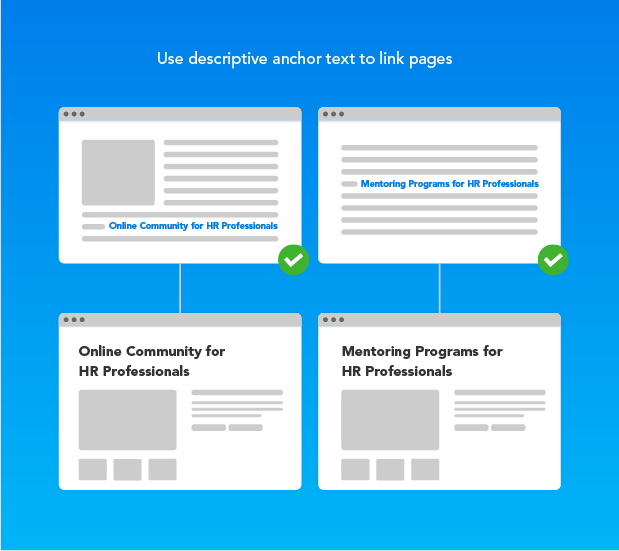Product
Learn more about the all-in-one, most powerful solution for community engagement
Learn more about the all-in-one, most powerful solution for community engagement
We power great communities across all industry sectors.
Small and large enterprises turn to Hivebrite to engage with customers, partners, employees, alumni, industry experts, and more
Charities, foundations, NGOs, and government organizations turn to Hivebrite to engage with donors, volunteers, and mentors
Schools, colleges and universities use Hivebrite as a digital engagement hub for their student & alumni groups, researchers, mentors and volunteers
Clubs, Associations and professional bodies rely on Hivebrite to offer their members networking and collaboration opportunities, and other services
Organic search drives over half of all web traffic, making community SEO one of the most valuable strategies for sustainable community growth. When potential members search for topics related to your community’s purpose, you want your platform to appear at the top of their results.

Community SEO is the practice of optimizing your online community’s public pages and content to rank higher in search engine results, specifically targeting keywords that potential members use when looking for communities, resources, or connections in your niche.
Community SEO offers unique advantages for growing your online community compared to other acquisition channels:
Consider this scenario: You’re running a community for climate activists and gardeners. When someone searches “community for gardeners,” “sustainable living groups,” or “how to start composting,” you want your community appearing in those results. This is where community SEO becomes your growth engine.
While search engines cannot crawl private community areas, optimizing your public pages creates the entry points that drive member acquisition and community growth.
Successful community SEO starts with understanding how your ideal members search for communities, resources, and connections online.
Think like your ideal community member. Ask yourself: If I wanted to find a community like mine, what would I search for?
Pro tip: Survey your existing members about their discovery journey. Understanding how current members found your community reveals valuable keyword opportunities often overlooked by community managers.
Here’s a member research template to get you started:
Hi, [Community Member Name]!
My name is [Your Name] and I’m [Your Title] at [Organization Name].
I wanted to thank you for your participation in our community. I enjoyed [specific example of their positive contribution].
To help us grow the community, I’d love to understand how you discovered us. Could you share what you searched for or how you found [Community Name]?
Thanks,
[Your Name]
Long-tail keywords are phrases typically containing three to five words that are highly specific to what people are searching for.
Example: “Events for women working in 3D printing” (long-tail) vs. “3D printing events” (short keyword)
Long-tail keywords work exceptionally well for community SEO because they:
Research your keywords’ search volume and competition using these community SEO tools:

Once you’ve identified your community SEO keywords, strategic placement across your public pages maximizes their impact.
Remember: Create valuable content around your keywords rather than simply adding keywords to existing content. Keywords should sound natural when woven into your community messaging.
Fast-loading community pages are crucial for both user experience and search rankings. Large media files, complex code, and unnecessary plugins can slow down your community pages.
Tip: Use Google’s PageSpeed Insights tool to analyze your community pages’ performance on mobile and desktop devices. The tool provides specific recommendations for improving load times.
Most potential community members will discover your community through mobile search. Ensure your community platform provides an excellent mobile experience for both discovery and engagement.
Internal links connect your community pages and help search engines understand your site structure while making navigation easier for potential members.
Tip: Use descriptive anchor text that includes community-related keywords when linking between your pages. This signals to search engines what each page covers and helps distribute ranking power across your community site.

Fresh, relevant content that addresses your potential members’ questions and interests strengthens your community SEO performance. Content ideas for community SEO:
Encourage community members to create content that can be made publicly searchable, such as:
This authentic, member-created content often performs well in search results because it addresses real questions and needs within your community space.
Track these key metrics to measure your community SEO success:
Tip: Configure Google Search Console to monitor your community pages’ search performance. The dashboards provide valuable data on which keywords drive traffic to your community and how your pages perform in search results.
Use Google Search Console as your primary tool for monitoring community SEO performance. Its reports show you:
Search engine algorithms consider hundreds of factors that constantly change with user behavior and technology advances. The strategies covered in this guide provide a strong foundation for community SEO success.
Remember this principle: Create compelling content that adds genuine value for your potential community members. While you need to optimize your pages for search engine discovery, always prioritize your members’ experience and needs.
Your community exists to serve real people with real goals and challenges. When you focus on creating valuable experiences for your community members, search engines will recognize and reward that value with better rankings.
Success in community SEO comes from consistently providing value to your members while making it easy for search engines to understand and recommend your community to the right people.
Q: What is community SEO and why does it matter?
A: Community SEO is the practice of optimizing online community content and pages to rank higher in search engine results. It matters because organic search drives over 50% of web traffic, making it one of the most cost-effective ways to attract new community members and increase visibility.
Q: How do you find the right keywords for community SEO?
A: Start by thinking like your ideal community member – what would they search for? Use keyword research tools like SEMRush or AlsoAsked to identify relevant terms with good search volume. Focus on long-tail keywords that are specific to your community’s niche and purpose.
Q: Which pages should you optimize for community SEO?
A: Prioritize your public-facing pages including your homepage, about page, community guidelines, and any publicly accessible content. While search engines can’t crawl private community areas, optimizing your public pages creates the entry points that drive member acquisition.
Q: What’s the difference between community SEO and regular website SEO?
A: Community SEO focuses specifically on attracting potential members who are looking for connection, shared interests, or collaborative spaces. The keywords and content strategy center around community-building terms, member benefits, and the value of joining your specific community.
Q: How do you measure community SEO success?
A: Track metrics like organic search traffic, keyword rankings, new member sign-ups from organic search, and engagement rates from search-driven visitors. Use Google Search Console to monitor your community pages’ performance in search results.
Q: Can private community content help with SEO?
A: While private content isn’t directly indexed by search engines, it can support your SEO strategy by keeping members engaged, which may lead to more social sharing, backlinks, and positive reviews that boost your community’s overall search authority.